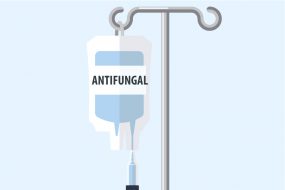Treatment for Invasive Candidiasis
How is invasive candidiasis treated?

The specific type and dose of antifungal medication used to treat invasive candidiasis usually depends on the patient’s age, immune status, and location and severity of the infection. For most adults, the initial recommended antifungal treatment is an echinocandin (caspofungin, micafungin, or anidulafungin) given through the vein (intravenous or IV). Fluconazole, amphotericin B, and other antifungal medications may also be appropriate in certain situations.
How long does the treatment last?
For candidemia, treatment should continue for 2 weeks after signs and symptoms have resolved and Candida yeasts are no longer in the bloodstream. Other forms of invasive candidiasis, such as infections in the bones, joints, heart, or central nervous system, usually need to be treated for a longer period of time.
Healthcare providers can click here for the Infectious Diseases Society of America’s Clinical Practice Guidelines for the Management of Candidiasisexternal icon.